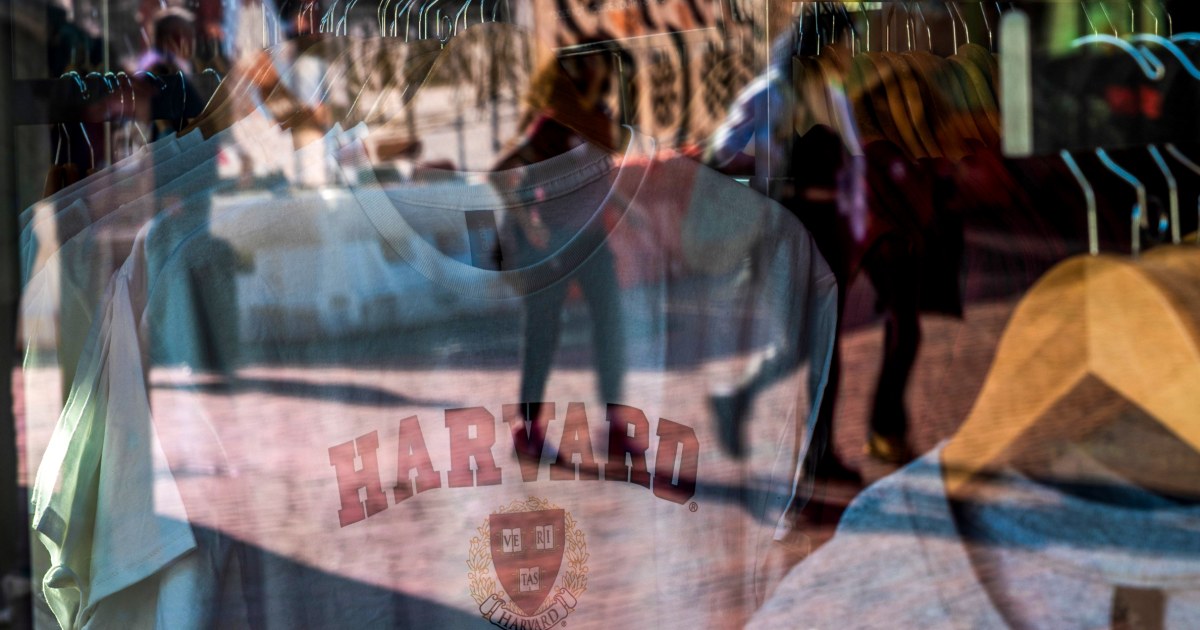South-Carolina
Vote Now: Who should be this week’s SBLive South Carolina High School Athlete of the Week (Dec. 6-10)?


South-Carolina
SC lawmakers to take a closer look at modernizing, improving state roads

COLUMBIA, S.C. (WIS) – One of the issues South Carolina lawmakers say they hear about all the time from constituents is the shape of the state’s roads.
They have some ideas on how to improve them but want to first hear directly from South Carolinians on what challenges they face during their daily commutes.
It will be part of the work of a new committee at the State House, which will take a closer look at the South Carolina Department of Transportation.
House Speaker Murrell Smith, who established the new South Carolina Department of Transportation Modernization Ad Hoc Committee, said its formation is not meant to criticize SCDOT but to improve and modernize it.
“This job is not to fix potholes. This is not to widen roads. Those are all being done right now. But it’s to build a foundation for long-term growth, safety and opportunity,” Smith, (R–Sumter), said.
It comes as South Carolina’s growth shows no signs of stopping.
But its infrastructure has not always kept up.
“When our road system was built, it was probably built with 2.5 million to 3 million people in mind,” Smith said, compared to the approximately 5.5 million people estimated to now call South Carolina home. “We have 71,000 miles of state roads, being one of the largest road systems per capita in this whole country, and so we have a lot of challenges.”
Areas where the Speaker wants the committee to focus include congestion, permitting reform and SCDOT’s organizational structure.
He also wants them to figure out whether South Carolina needs to revisit its decades-old toll statute and look at how it raises money to fix infrastructure, including potential new resident fees and raising the registration fee that electric vehicle owners pay.
“I do not think that we need to raise the gas tax. We just came off the gas tax increase over the last few years. If you look at where South Carolina is in comparison to other states, we’re right in the middle,” Smith said.
Not mentioned was determining whether the state should turn over control of more roads to local governments.
Gov. Henry McMaster believes that question is worth taking a closer look.
“I think that’s a good idea,” McMaster told reporters. “The specifics would have to be determined, but as you know, we have in South Carolina seems like all our roads are state-owned roads. There are some very large states that don’t have as many miles of state highway miles.”
Over the months ahead, this committee will be traveling around the state and holding public hearings.
Its goal is to have legislation and recommendations ready by the time the full General Assembly reconvenes in Columbia next January.
In response to the committee’s formation, the South Carolina Department of Transportation said it has made significant progress since the passage of the landmark 2017 roads bill, which implemented an increase to the state’s gas tax, which funds infrastructure improvements.
Nearly $7 billion in road and bridge construction is underway now, according to SCDOT.
“We recognize that there is more work to do and we look forward to working with the Study Committee to build upon that progress. South Carolina has grown and changed tremendously and we are committed to delivering a transportation system that will serve our state for generations to come,” the agency said in a statement.
Feel more informed, prepared, and connected with WIS. For more free content like this, subscribe to our email newsletter, and download our apps. Have feedback that can help us improve? Click here.
Copyright 2025 WIS. All rights reserved.
South-Carolina
South Carolina Lottery Powerball, Pick 3 results for June 9, 2025

Powerball, Mega Millions jackpots: What to know in case you win
Here’s what to know in case you win the Powerball or Mega Millions jackpot.
Just the FAQs, USA TODAY
The South Carolina Education Lottery offers several draw games for those aiming to win big. Here’s a look at June 9, 2025, results for each game:
Winning Powerball numbers from June 9 drawing
30-33-40-43-52, Powerball: 25, Power Play: 4
Check Powerball payouts and previous drawings here.
Winning Pick 3 Plus FIREBALL numbers from June 9 drawing
Midday: 2-5-5, FB: 8
Evening: 7-8-9, FB: 7
Check Pick 3 Plus FIREBALL payouts and previous drawings here.
Winning Pick 4 Plus FIREBALL numbers from June 9 drawing
Midday: 4-8-6-5, FB: 8
Evening: 7-4-7-8, FB: 7
Check Pick 4 Plus FIREBALL payouts and previous drawings here.
Winning Cash Pop numbers from June 9 drawing
Midday: 06
Evening: 04
Check Cash Pop payouts and previous drawings here.
Winning Palmetto Cash 5 numbers from June 9 drawing
09-20-24-33-36
Check Palmetto Cash 5 payouts and previous drawings here.
Winning Powerball Double Play numbers from June 9 drawing
01-07-24-50-59, Powerball: 11
Check Powerball Double Play payouts and previous drawings here.
Feeling lucky? Explore the latest lottery news & results
Are you a winner? Here’s how to claim your lottery prize
The South Carolina Education Lottery provides multiple ways to claim prizes, depending on the amount won:
For prizes up to $500, you can redeem your winnings directly at any authorized South Carolina Education Lottery retailer. Simply present your signed winning ticket at the retailer for an immediate payout.
Winnings $501 to $100,000, may be redeemed by mailing your signed winning ticket along with a completed claim form and a copy of a government-issued photo ID to the South Carolina Education Lottery Claims Center. For security, keep copies of your documents and use registered mail to ensure the safe arrival of your ticket.
SC Education Lottery
P.O. Box 11039
Columbia, SC 29211-1039
For large winnings above $100,000, claims must be made in person at the South Carolina Education Lottery Headquarters in Columbia. To claim, bring your signed winning ticket, a completed claim form, a government-issued photo ID, and your Social Security card for identity verification. Winners of large prizes may also set up an Electronic Funds Transfer (EFT) for convenient direct deposit of winnings.
Columbia Claims Center
1303 Assembly Street
Columbia, SC 29201
Claim Deadline: All prizes must be claimed within 180 days of the draw date for draw games.
For more details and to access the claim form, visit the South Carolina Lottery claim page.
When are the South Carolina Lottery drawings held?
- Powerball: 10:59 p.m. ET on Monday, Wednesday, and Saturday.
- Mega Millions: 11 p.m. ET on Tuesday and Friday.
- Pick 3: Daily at 12:59 p.m. (Midday) and 6:59 p.m. (Evening).
- Pick 4: Daily at 12:59 p.m. (Midday) and 6:59 p.m. (Evening).
- Cash Pop: Daily at 12:59 p.m. (Midday) and 6:59 p.m. (Evening).
- Palmetto Cash 5: 6:59 p.m. ET daily.
This results page was generated automatically using information from TinBu and a template written and reviewed by a South Carolina editor. You can send feedback using this form.
South-Carolina
Festival has 75,000 sunflowers on 6 acres at Denver Downs’ 140-acre farm, what to know
A festival with 75,000 sunflowers spread across six acres within an expansive 140-acre farm will be the featured attraction at the seventh annual South Carolina Sunflower Festival in Anderson County.
Visitors to the Denver Downs Farm, located at 1515 Denver Road, during the festival can take home sunflowers, enjoy live music, capture photos, visit local vendors, and experience special attractions, according to Catherine Garrison Davis, co-owner of Denver Downs.
“Sunflowers just make people happy, and we love sharing that happiness with our guests from all over the region who come to celebrate the beautiful flowers throughout the summer,” Davis said. “We can’t wait to see all the smiles and share our love for sunflowers during the festival.”
Festival dates are June 13-15 and June 20-22.
Sunflower festival tickets: What to know?
Here is what you should know about sunflower festival ticket prices.
- Admission tickets are available online.
- Purchase your tickets online for $21.55, saving 35% off the gate price of $33.95.
- Dogs on leashes are permitted to attend; however, they must be admitted separately for a $10 fee.
Visitors can also participate in the U-Pick experience, where they can gather a large bucket of sunflowers for $28.95.
Sunflower Festival attractions
Sunflower festival activities run from Friday to Sunday, while the sunflower fields are open daily.
Monday through Thursday, the sunflower fields are open for photos and picking from 6 p.m. to 9 p.m.
Time slots for Sunflower Festival activities are listed below.
- Fridays, 4 to 9 p.m., barnyard activities, 4 to 9 p.m.
- Saturdays, 10 a.m. to 8 p.m., barnyard activities, 10 a.m. to 4 p.m.
- Sundays, 10 a.m. to 8 p.m., barnyard activities, 10 a.m. to 4 p.m.
Attendees can enjoy the Jumbo Jumping Pillow, ride the Barnyard Express Zipline, or challenge themselves on the Rope Course, human football, tricycle races, the climbing wall, sunflower fields, the mountain slide, paintball gallery, jumping pillow, ball zone, dodgeball, the gaga pit, and the Double D Gem Mine.
Additionally, there will also be farm animals including goats, mini horses, chickens, and our new Jersey calf.
Along with the bright yellow and black sunflowers, attendees will be treated to a few surprises, such as exotic sunflower varieties they may have never seen before, Davis said.
Denver Downs Farm is showcasing a diverse range of sunflower varieties, including the Firecracker, the Teddy Bear, and the Sunrich Lime. Visitors will also encounter Vincent’s Choice, Sunbright Supreme, Double Quick Orange, Pro-Cut Gold Lite, and Pro-Cut Red.
Sunflower Festival vendors
Attendees will have the opportunity to enjoy a taste of South Carolina with a variety of local vendors offering a range of food options, including hamburgers, hot dogs, and chicken fingers.
Festivalgoers can indulge their sweet tooth with funnel cakes and snow cones, or quench their thirst with Denver Downs lemonade. They can also try Silo Sangrias or Flower Frose from the Vine and Barrel Beer Garden.
Travis Rose covers Anderson County for the Independent Mail. Reach him via email at trose@gannett.com.
-

 West4 days ago
West4 days agoBattle over Space Command HQ location heats up as lawmakers press new Air Force secretary
-

 Alaska1 week ago
Alaska1 week agoInterior Plans to Rescind Drilling Ban in Alaska’s National Petroleum Reserve
-

 News1 week ago
News1 week agoTrump administration continues to target international students. What to know and what could be next.
-

 Education1 week ago
Education1 week agoVideo: Inside Trump’s Attack on Harvard
-

 Politics1 week ago
Politics1 week agoCalifornia beach ‘Resist!’ protest pushes ‘kindness’ while calling to ‘86 47’ in anti-Trump message
-

 Technology1 week ago
Technology1 week agoMicrosoft will finally stop bugging Windows users about Edge — but only in Europe
-

 World1 week ago
World1 week agoTwo dead, hundreds arrested during PSG Champions League celebrations
-

 World1 week ago
World1 week agoTwo suspected Ugandan rebels killed in Kampala explosion


















